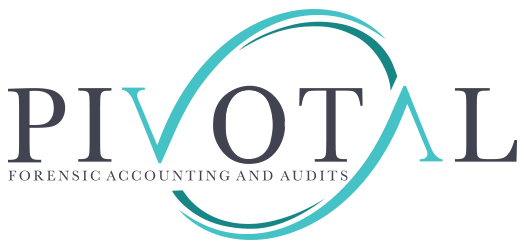IRS To Provide $1 Billion In Penalty Relief To 4.7 million Taxpayers
The Internal Revenue Service (IRS) has currently announced a groundbreaking initiative to provide $1 billion in penalty relief to four 7 million taxpayers stricken by the financially demanding situations of tax years 2020 and 2021. This flow targets to alleviate the economic burden on eligible individuals, organizations, trusts, estates, and tax-exempt groups. The penalty relief initiative is automatic, requiring no movement from eligible taxpayers. This article explores the information on the IRS penalty comfort software, its eligibility criteria, and the capability impact on each person taxpayer and the wider financial system.
Overview of the IRS Penalty Relief Initiative
The IRS penalty remedy initiative is a response to the economic challenges posed by using the COVID-19 pandemic, providing a much-needed monetary lifeline for eligible taxpayers. The comfort is estimated at $1 billion, with an average of $206 consistent with return. It covers failure-to-pay consequences for tax years 2020 and 2021, reaping benefits from about five million tax returns filed via four 7 million people, companies, trusts, estates, and tax-exempt businesses.
Automatic Nature of the Relief
One fantastic component of the initiative is its automatic nature. Eligible taxpayers can take action to receive the relaxation. The IRS has already adjusted eligible individual bills and will continue to make modifications for commercial enterprise money owed and other entities in the coming months. This streamlined manner aims to make certain that relief reaches taxpayers effectively.
Refunds and Credits
The comfort extends to eligible taxpayers who’ve already paid their complete stability. In such instances, the IRS will issue a reimbursement or credit score for the fee towards every other exceptional tax liability. This method displays a commitment to fairness, making sure that the ones who’ve already fulfilled their tax duties receive the benefits of penalty remedy.
Eligibility Criteria for Penalty Relief
Understanding the eligibility criteria is vital for taxpayers searching for comfort. The IRS has mentioned precise parameters for eligibility, with a focus on assessed tax amounts and notices issued throughout a distinctive period.
Who Qualifies for Relief
Eligible taxpayers consist of individuals, agencies, trusts, estates, and tax-exempt groups that filed certain Form 1040, 1120, 1041, and 990-T collection profits tax returns for tax years 2020 or 2021. To qualify, the assessed tax needs to be below $100,000. This restriction applies one after the other to every go-back and every entity.
IRS Collection Notice Process
Taxpayers in the IRS series word process or the ones issued preliminary stability due word between February 5, 2022, and earlier than December 7, 2023, are eligible for automated penalty remedy. This centered technique aims to assist the ones who’ve been actively engaged in addressing their tax obligations.
Ineligibility Criteria
While the relaxation initiative is automated for eligible taxpayers, folks who still need to meet the criteria have alternatives. Ineligible taxpayers can also discover present penalty comfort approaches, which include applying for a remedy under affordable reason criteria or the First-Time Abate application. The IRS presents info on those alternatives at IRS.Gov/penaltyrelief.
Implementation Timeline and Process
The IRS has provided a timeline for the implementation of the penalty relief initiative. Individual accounts have already been adjusted, with business bills slated for adjustments from overdue December to early January. Trusts, estates, and tax-exempt agencies can assume comfort adjustments from February to early March 2024.
Refund Distribution
The IRS has commenced the distribution of refunds, beginning from the assertion through January 2024. Taxpayers who do now not receive a reimbursement might also get hold of a special reminder note with their updated balance in early 2024. For people with questions on penalty alleviation, the IRS encourages contacting them after March 31, 2024.
Viewing Relief on Tax Transcript
Individual and commercial enterprise taxpayers who acquire reimbursement or credit through the penalty comfort initiative can view the changes on their tax transcript. This transparency objective is to offer taxpayers a clear know-how of the comfort applied to their bills.
Impact on Individuals, Businesses, and the Economy
The $1 billion penalty alleviation initiative is poised to have an enormous impact on diverse segments of the populace and the wider financial system. This segment explores the results for individual taxpayers, small organizations, and the general financial panorama.
Alleviating Financial Stress on Individuals
Individual taxpayers, particularly those with earnings below $four hundred 000, are anticipated to revel in extensive relief. The automated nature of the initiative ensures that eligible people do not want to navigate complicated application approaches, imparting a straightforward technique to alleviate monetary stress. Alleviation can empower people to redirect finances in the direction of important desires, debt repayment, or savings.
Supporting Small Businesses
Small companies, a crucial issue of the economy, stand to benefit from the penalty comfort software. By easing the load of tax penalties, the initiative gives a lot of needed support to businesses that can have confronted financial setbacks at some point in the pandemic. This relief can contribute to stabilizing operations, maintaining employees, and fostering economic healing at the grassroots level.
Stimulating Economic Recovery
The injection of $1 billion in penalty relief into families and businesses can act as a catalyst for financial healing. As individuals and companies have extra monetary flexibility, client spending may also increase, mainly due to heightened economic hobbies. This aligns with broader authorities’ efforts to expedite restoration in the aftermath of the worldwide pandemic.
Implementation Challenges and Criticisms
While the IRS penalty relief initiative has received rewards for its timely and compassionate technique, there are demanding situations and criticisms that merit interest.
Logistical Challenges
Implementing an application of this scale presents logistical demanding situations for the IRS. The need to process hundreds of thousands of applications, affirm eligibility, and distribute refunds in a timely manner requires green structures and assets. The IRS has to cope with capability delays making sure the initiative achieves its supposed effect.
Fairness and Equity Concerns
Critics improve worries about the fairness and equity of the penalty comfort initiative. They argue that people and agencies with higher assets and access to economic assistance can also disproportionately gain, leaving those with fewer resources at a endured drawback. Addressing these issues is vital to retaining public trust and making sure this system is successful.
Future Implications for IRS-Taxpayer Relations
The penalty relief initiative signifies a pivotal moment in the relationship between the IRS and taxpayers. This section explores how this initiative could shape the destiny dynamics among the tax employer and the American public.
Building Trust and Confidence
The IRS, regularly regarded as an enforcement business enterprise, can construct belief and self-assurance among taxpayers through the penalty comfort initiative. By demonstrating empathy and flexibility during tough instances, the IRS can foster an advantageous perception and inspire voluntary compliance. Building acceptance as true is essential for the long-term success of tax administration.
Shifting Toward a Collaborative Approach
The automatic nature of the penalty alleviation initiative reflects a potential shift towards an extra collaborative and supportive courting between the IRS and taxpayers. Moving far away from a strictly punitive technique, the IRS may find that working collaboratively with individuals and organizations fosters a sense of shared responsibility for tax compliance. This collaborative technique may lead to extended voluntary compliance and greater cooperative tax surroundings.
In Conclusion
The IRS’s allocation of $1 billion in penalty remedy for four.7 million taxpayers marks a pivotal pass towards extra compassionate tax management. The computerized nature of relaxation, combined with its potential economic effect, underscores the IRS’s adaptability in addressing the demanding situations stemming from the COVID-19 pandemic. This initiative reflects a responsive technique, supplying a whole lot-wished monetary guide to eligible individuals, groups, and businesses, signaling a shift toward a more collaborative and empathetic relationship between the IRS and taxpayers.


